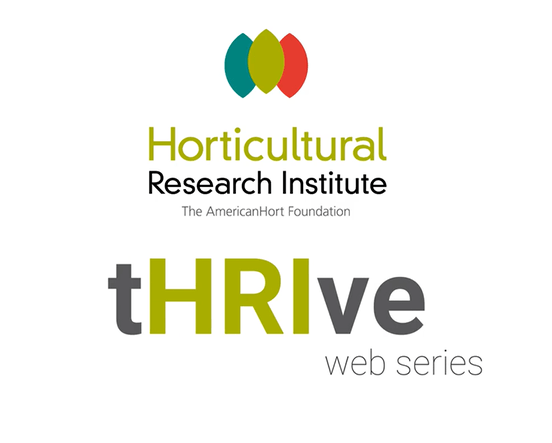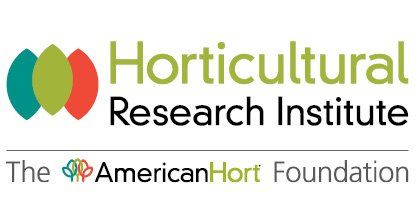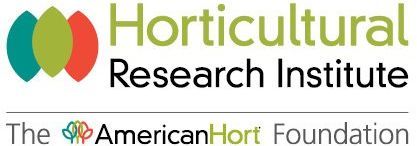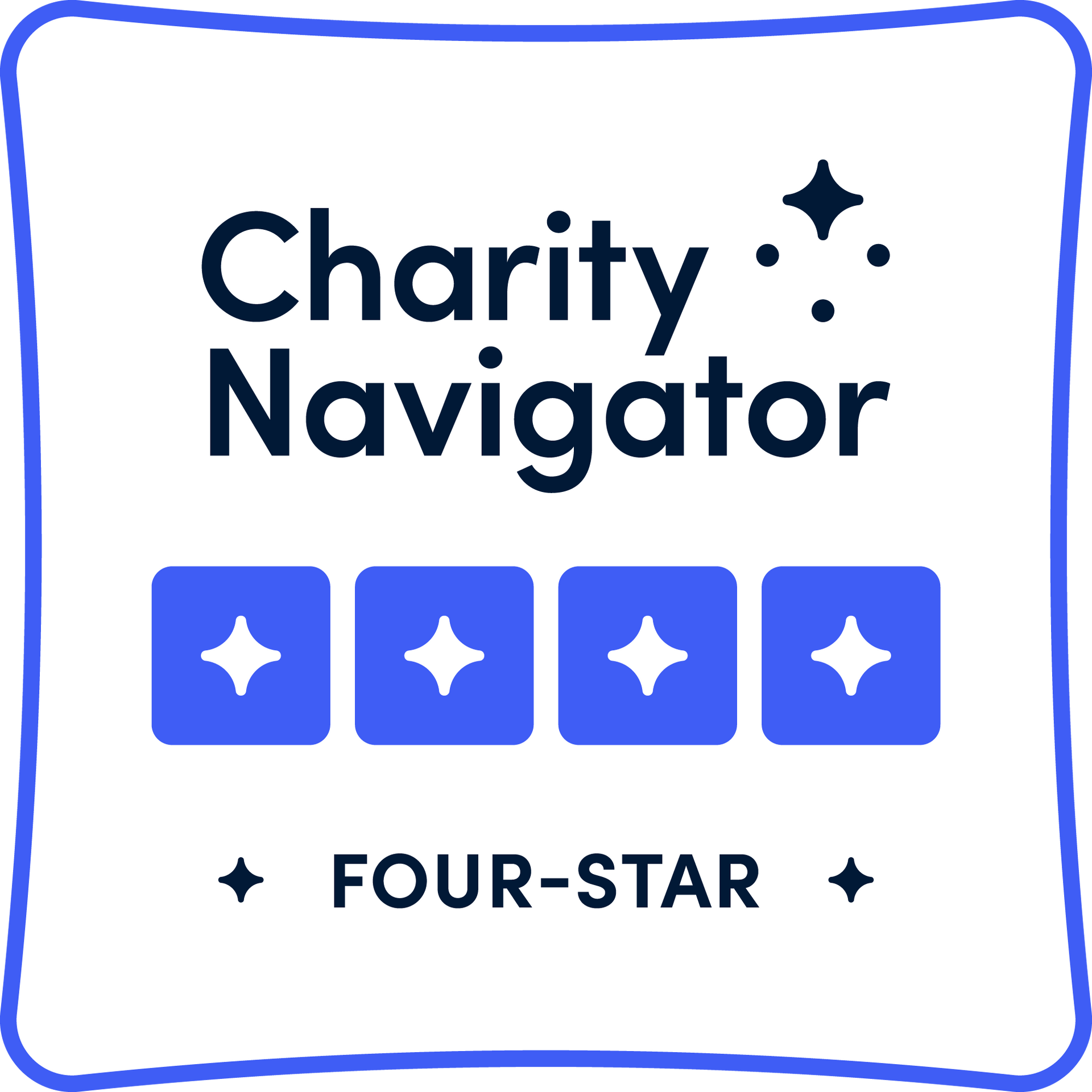HRI's Funded Research Projects for 2021
The Horticultural Research Institute (HRI), the foundation of AmericanHort, is pleased to announce the portfolio of research projects to be funded in 2021. Projects range from innovations to crop production for both greenhouse and nursery segments, emergent consumer research, pollinator research, and plant disease projects. A total of $364,000 will be awarded this year.
“Investing in diverse, high-quality research is our mission,” said Jennifer Gray, HRI Administrator. “The 2021 projects selected from a competitive batch of grant applications represent all facets of the industry and touch each of HRI’s four strategic research priorities.”
The Horticultural Research Institute’s mission is to direct, fund, promote, and communicate horticulture research. Supporting research that challenges current methods and bridges the divide between businesses and the consumer is exactly how HRI helps build prosperous businesses, advance the green industry, and fulfill its core vision.
QUANTIFYING PLANT BENEFITS
A practical method for rapidly assessing pollinator attraction to plant cultivars
H. Patch, Penn State University
With the increase in consumer demand for pollinator-friendly plant stock, there is a clear need for a user-friendly method to routinely evaluate plant attractiveness to pollinators. This project will develop a protocol for industry and flower trial assessors to rapidly and accurately estimate a cultivar’s attractiveness to beneficial insects in the field trial settings. Additionally, this project will develop a web tool prototype that will analyze data from this rapid assessment and rank trial cultivars based on their value to insect pollinators.
CREATING INNOVATIVE SOLUTIONS
Transparent Solar Cell Design for Greenhouses
R. R. Lunt & E. Runkle, Michigan State University
We have pioneered a range of transparent solar cells that selectively harvest invisible solar radiation. However, there are key differences between the photopic response in the human eye and the photon action response of plants that need to be considered as these devices are designed specifically for greenhouse applications. In this project we investigate the optical impact of various wavelengths on a range of horticultural crop species. This is the first step to optimize transparent solar cells designed to maximize both plant productivity and electricity generation simultaneously in the same area for worldwide adoptability.
Controlling Flowering of Summer-Fall Garden Mums with Strategic LED Lighting
Q. Meng, University of Delaware
In summer-fall garden mum programs, growers typically use black cloth to trigger flowering of these short-day plants under otherwise long days. However, pulling black cloth twice a day to create short days incurs labor and material costs with potential heat delay of flowering. Based on a theoretical flowering model for mums, this project aims to identify night LED lighting strategies to promote flowering of summer-fall garden mums with reduced or no use of black cloth.
Removal of paclobutrazol from captured irrigation runoff using slow sand filters
L. Oki, UC Davis
To stabilize water supplies and comply with runoff regulations, nurseries and greenhouses capture runoff from irrigation and storms. However, captured irrigation runoff may contain plant growth regulators (PGR) at concentrations high enough to cause stunting or deformation of non-target crop plants. Water treatment using slow sand filters may be able to provide long-term removal since contaminants are biologically degraded and the microbes performing the degradation are constantly regenerated.
Fluorescence imaging: a low-cost method for early stress detection
M. van Iersel, University of Georgia
Plants are exposed to different biotic and abiotic that can negatively impact crop production. Early detection of such stresses is important to mitigate their negative impact on the crop. Such detection typically depends on visual inspection of crops. However, stresses can only be detected when symptoms have become visible. Our objective is to develop and test a novel imaging approach for detection plant stress before visible symptoms are present.
GATHERING CONSUMER INSIGHTS
Gardening purchase motivation and satisfaction during COVID-19 isolation and their effects on likelihood to buy again
B. Behe, Michigan State University
The COVID-19 pandemic ignited a big interest in plants. Understanding why and how much of that will influence future plant purchases is the focus of a study to be conducted by Drs. Behe and Huddleston at Michigan State University. They will survey both plant purchasers and non-purchasers to discover how their attitudes and motivations for buying (or not buying) plant differ. Results from 2021 data will be compared to 2020 data. Growers, wholesalers, and retailers should all benefit from a better understanding of consumer perceptions this study will provide to improve their sales and communications.
Growing Green Industry Profits from an Emerging Market of Plantspeople
J. Campbell, University of Georgia
Recently, the horticulture world has seen an influx of new plantspeople entering the marketplace. These new consumers are providing new challenges and opportunities for our industry. This project will provide insight and tools, developed from consumer research, to equip horticulture industry stakeholders to better engage emerging audiences and convert them into lifelong buyers.
PRODUCING PRACTICAL AND ACTIONABLE SOLUTIONS
Fertility, population dynamics, and pollinator attractiveness of standard and “sterile” cultivars: Buddleia as a case study may inform the way forward for our national industry
R. Contreras, Oregon State
Many plants are grown not just for their beauty but for their ecosystem services, particularly pollinator attraction. But plants such as butterfly bush have escaped cultivation in some regions such that they have been banned. To address this, breeders have developed new cultivars with the goal of reduced fertility. This project aims to answer several questions: 1) What happens to pollinator attraction with reduced fertility? 2) What is the fertility of a suite of modern cultivars compared to old classics? 3) Can we use population modeling to establish a “safe” threshold of fertility?
A holly jolly Christmas starts with disease-free hollies
F. Hand, Ohio State University
An emergent fungal fruit rot disease is severely affecting deciduous holly production in Midwestern and Eastern U.S. States. This project will screen deciduous holly cultivars for disease susceptibility, to provide growers with selection recommendations when establishing new plantings. Additionally, this project aims to identify antifungal compounds naturally present within different cultivars fruit that can suppress pathogen proliferation. Antifungal compound identification has the potential to feed into a biofungicide development pipeline, which will ultimately increase the availability of sustainable disease management tools for the nursery industry.
Characterization and Modeling of Physical and Hydraulic Properties of Wood Substrates
B. Jackson, North Carolina State University
The demand for soilless substrates continues to increase as ornamental/floriculture markets grow and as more traditionally field-grown crops are transitioning to soilless growing systems. As a result, global soilless substrate demand is projected to increase by 240% by 2050. To meet this significant demand, wood products will play a major role in future substrate formulations. After decades of scientific research and grower trials, we have a better understanding of how wood substrates can be used, but more in-depth evaluations and characterizations are needed to advance the use (and confidence) in these new materials. The aim of this work is to provide in-depth characterizations and testing of commercially available engineered wood components.
Early detection of Phytophthora spp. on nursery-grown ornamental plants
S. N. Jeffers, Clemson University
Diseases caused by Phytophthora species are a constant and substantial problem in U.S. nurseries and greenhouses with few sustainable management options. While the use of fungicides can be effective temporarily, the best long-term solution is sanitation. Therefore, it is essential to identify and eliminate sources of inoculum early during plant production. This research will evaluate methods for efficiently detecting Phytophthora spp. on nursery-grown plants and investigate factors that may affect detection.
Developing Native Plants for Sustainable Green Industry Production
Y. Sun, Utah State
The introduction of novel native plants for landscaping has the potential to infuse new energy into the Green Industry. Utah ranks in the top 10 states for vascular plant species diversity. Utah State University has capitalized on this diversity by establishing a program (Sego Supreme™) for selecting and introducing plants native to Utah and the Great Basin for use in water-efficient landscaping. Many natives are not used in the industry because they are so difficult to propagate, produce, and/or maintain. This project aims to develop snowbrush ceanothus (Ceanothus velutinus), a broadleaf evergreen shrub, for sustainable horticultural production and landscape use.
Share This Post






